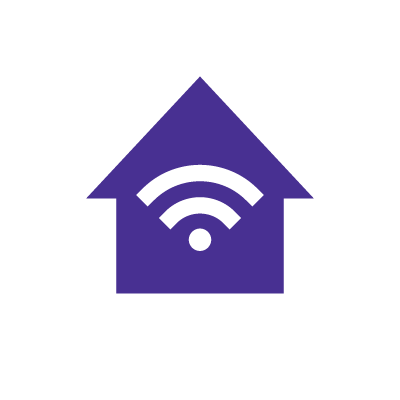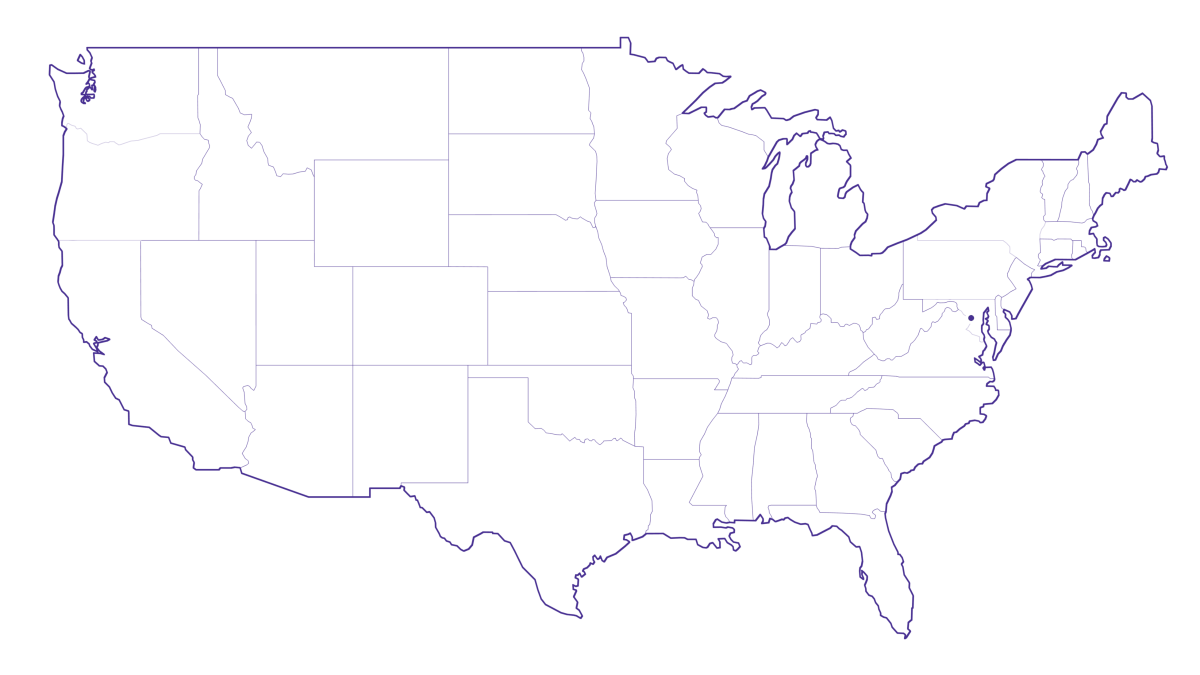WiFi 6E Explained

WiFi 6e is an extended version of WiFi 6 that operates on the 6 GHz radio frequency and provides faster wireless speeds and lower latency than WiFi 6.
This article will cover WiFi 6e’s features, including its speed, device capacity and compatibility, coverage and security. By the end of the article, you’ll discover whether WiFi 6e is necessary for your internet experience and what advantages it provides for your network.
WiFi that just works!
WiFi plans for any home
Tiny, large or somewhere in between; find WiFi coverage to fit any space. Blanket your entire home with a fast and ultra‑reliable connection.

What is WiFi 6e?
WiFi 6e is an upgraded version of WiFi 6 (IEEE 802.11ax) that extends to the 6 GHz band in addition to the 2.4 and 5 GHz bands used by WiFi 6. It reduces network congestion by adding additional bands to the spectrum, allowing faster speeds, lower latency and less signal interference than previous WiFi versions.
The WiFi Alliance officially released WiFi 6e in April 2020 after the Federal Communications Commission (FCC) approved using the 6 GHz spectrum for WiFi and other purposes. The 6 GHz band provides an additional 1200 MHz spectrum for WiFi applications, improving WiFi performance with wider channels, higher throughput and less network congestion.
WiFi 6e vs WiFi 6
WiFi 6e is not a new WiFi standard but an extension of WiFi 6 that uses the 6 GHz frequency band. WiFi 6e expanded WiFi 6’s capabilities into the 6 GHz bands, resulting in higher bandwidth, device capacity, data throughput and security than WiFi 6.
The significant differences between WiFi 6e and WiFi 6 include:
- WiFi 6 operates on 2.4 and 5 GHz frequency bands, while WiFi 6e utilizes 6 GHz in addition to the two frequencies used by WiFi 6.
- The 6 GHz band has less signal interference as only WiFi 6e-enabled devices operate on the frequency.
- WiFi 6 is backward-compatible, meaning it can work with legacy devices, while WiFi 6e only works with WiFi 6e-enabled devices. WiFi 6e’s exclusivity allows compatible devices to benefit from WiFi 6e’s features without competing with non-6e devices.
- WiFi 6e devices can access up to seven additional 160 MHz channels in the 6 GHz band, increasing device capacity and reducing network interference. On the other hand, WiFi 6 runs on narrower 80 MHz and 160 MHz channels.
- WiFi 6e provides faster data transmission speeds and higher bandwidth levels due to the additional channels, making it ideal for bandwidth-intensive applications like 4K/8K streaming, virtual reality (VR) and online gaming.
- WiFi 6e implements WPA3, the latest security protocol for WiFi networks.
- While the 6 GHz frequency band is higher than WiFi 6’s 2.4 and 5 GHz bands, it results in a shorter WiFi range. When a WiFi 6e-enabled device leaves the 6 GHz range, it usually switches to a lower frequency band, such as 5 GHz or 2.4 GHz, keeping you connected.
Remember that WiFi 6e is a relatively new technology that requires new hardware. To get the full benefits of WiFi 6e, both the router and the primary devices must support the 6 GHz frequency band. This means upgrading to WiFi 6e will involve acquiring new devices, which can be costly.
Switch & save
Astound is the #1 cable ISP
Stream live content, work, surf, game and connect to multiple devices with speeds up to 1500* Mbps through our ultra‑reliable fiber‑powered network.*

How fast is WiFi 6e?
WiFi 6e can deliver theoretical speeds of up to 9.6 Gbps, similar to WiFi 6. The 6 GHz band provides faster data transmission rates to WiFi 6e-enabled devices as it is less congested and experiences lower signal interference.
However, real-time speeds depend on factors such as WiFi range, channel configuration, device performance and internet connection quality. According to Reddit, a user conducted speed tests showing WiFi 6e speeds reaching up to 1.7 Gbps in real-time.
WiFi 6e has significantly lower latency than previous WiFi generations. Low latency is ideal for real-time applications like online gaming and video calls that require instant responses without lag or delay.
The reduction in latency is achieved by efficient data encoding and technologies like Orthogonal Frequency Division Multiple Access (OFDMA) and Multi-User Multiple Input Multiple Output (MU-MIMO), which allow direct communication between devices and enable less signal interference between channels.
By utilizing the 6 GHz band together with the OFDMA and MU-MIMO technologies, WiFi 6e can support multiple connections running together, resulting in a higher device capacity.
This is beneficial in households with multiple connected devices running simultaneously while maintaining high speeds and low latency, even as the number of devices grows.
Benefits of WiFi 6e
WiFi 6e provides several benefits by operating on the 6 GHz band in addition to the previous generations’ 2.4 and 5 GHz bands. The extension to the 6 GHz band introduces advancements that improve overall WiFi performance.
These developments are achieved due to the following key features of WiFi 6e:
Increased number of channels
The 6 GHz frequency band increases the spectrum available for WiFi with an additional 1200 MHz spectrum. Per Cisco, the 6 GHz band also adds the following wider channels to the spectrum:
- 59 non-overlapping 20 MHz channels.
- 29 non-overlapping 40 MHz channels.
- 14 non-overlapping 80 MHz channels.
- Seven non-overlapping 160 MHz channels.
The increase in wider channels enables higher bandwidth, higher data throughput rates, low latency and reduced interference between devices. These increases in channels make WiFi 6e ideal for handling applications requiring higher bandwidth and low latency, such as 4K and 8K video streaming, online gaming, virtual reality (VR) and video conferences.
Data transmission
WiFi 6e provides faster data transfer rates thanks to the availability of wider channels in the 6 GHz band. It also incorporates the 1024-QAM (Quadrature Amplitude Modulation Mode) modulation scheme from WiFi 6, which enables more data encoding within the same radio frequency.
1024-QAM enables a 25% improvement in data transmission rates within the same frequency bandwidth by altering radio signal amplitude and phase.
The result is faster data transmission rates and improved spectrum efficiency that can handle high-speed applications like large file transfers, 4K and 8K streaming and online gaming.
Extends battery life
WiFi 6e, similar to WiFi 6, has Target Wait Time (TWT) technology, which allows primary and smart home devices to control when and how frequently they wake up to receive and transmit data, thereby extending their battery life. This approach helps devices conserve power in addition to preventing channel congestion.
Increased device capacity
The 6 GHz band and the MU-MIMO and OFDMA technologies increase the WiFi 6e’s device capacity by adding bandwidth to the spectrum and enabling devices to communicate simultaneously without network degradation.
Improved security
WiFi 6e supports WPA3 encryption, which promotes user privacy in WiFi networks by improving network security against cyber attacks and enabling encrypted data transfer.
Build your plan
Your perfect plan is just a click away
Get the speeds, WiFi, mobile and TV plans you need all at an affordable price. Bundle your services with Astound and see how much you can save.

When should I upgrade to WiFi 6e?
Deciding when to upgrade to WiFi 6e depends on different factors, including your current internet speeds, internet requirements and the devices you own. Before upgrading your WiFi network, check your device’s compatibility and ask yourself the following questions to determine if upgrading is appropriate.
- Is my WiFi network slow in performance?
If you notice slow WiFi speeds, upgrading to WiFI 6e will significantly improve your WiFi performance. If you have a high-speed internet connection, such as fiber-powered internet, WiFi 6e offers Gigabit+ speeds to maximize your internet’s speeds and provide a stable connection. - Am I adding new devices to my network?
WiFi 6e’s additional channels have significantly improved its device capacity, allowing it to accommodate multiple devices on your home network. If you notice slow WiFi performance due to various connected devices, upgrade to WiFi 6e to reduce network congestion and improve overall performance. - Is there a demand for faster internet speeds?
Multiple users in your household gaming online, streaming 4K and 8K videos, or working from home require faster internet speeds. WiFi 6e offers faster speeds, lower latency, and more bandwidth to handle these applications simultaneously. - Is there poor WiFi coverage?
If you have a large home, your router may fail to cover some areas of the house. Consider upgrading to WiFi 6e and combining it with a mesh WiFi system. The mesh system extends WiFi coverage across your home and optimizes internet performance. You can place the mesh routers anywhere in your house to broaden the WiFi coverage.
If you bought your current router before 2020, consider upgrading your WiFi network to WiFi 6e. While WiFi 6e technology is still new, and you may not yet own WiFi 6e-compatible devices, upgrading now means you will still get the benefits of faster speeds, lower latency and improved security as you buy more compatible devices over time.
What devices support WiFi 6e?
Internet service providers (ISPs) and device manufacturers are rolling out compatible devices as WiFi 6e gains traction. WiFi 6e is designed to cater to devices with different power requirements, including Standard Power (SP), Lower Power Indoor (LPI) devices and Very Low Power (VLP) devices.
Let’s look at how each type of device supports WiFi 6e:
- Standard Power (SP) devices
SP devices like laptops, smartphones, tablets and gaming consoles are the most common WiFi 6e implementations. SP devices are coordinated using the Automated Frequency Coordination Service (AFC) to prevent the 6 GHz band from interfering with existing services such as cellular lines, satellite services and television broadcast services. WiFi 6e gives SP devices faster data transfer speeds, less interference and more bandwidth for data-intensive activities like streaming, online gaming, and video conferencing. - Lower Power Indoor (LPI) devices
LPI devices are primarily used indoors and require lower power than SP devices. These devices include smart home appliances and Internet of Things (IoT) devices. While LPI devices may not need the full range and speed capabilities of WiFi 6e, they benefit from the expanded capacity and reduced network congestion in the 6 GHz band, ensuring stable and dependable connections in smart home installations. - Very Low Power (VLP) devices
VLP devices consume the least power and are suited for battery-operated scenarios. These devices include sensors, wearables and remote monitoring devices. VLP devices leverage WiFi 6e’s 6 GHz bands for intermittent data transmission and low latency for real-time responses while preserving battery life.
Mesh WiFi with
eero Secure
Enhanced Whole Home WiFi uses multiple routers (or eeros®) to boost range, speed and stability. While eero Secure, included at no extra cost, offers parental controls, ad blocking and internet backup for constant connectivity.
Do I need a WiFi 6e router?
You need a WiFi 6e router to fully leverage the benefits of WiFi 6e’s 6 GHz spectrum. A WiFi 6e router has the potential to deliver Gigabit+ speeds*, lower latency and a higher device capacity to comfortably handle intensive activities like 4K and 8K video streaming, online gaming and work-from-home tasks.
While having a WiFi 6E router is necessary, it’s also important that your devices support WiFi 6E. If your devices support WiFi 6 or previous WiFi versions, they will utilize the 5 GHz and 2.4 GHz frequency bands.
However, they will not benefit from the improved speeds and other benefits the WiFi 6e router offers. Upgrading your router and devices will ensure a seamless, high-speed wireless experience.
Eero Pro 6e router
The eero Pro 6e router is a mesh router designed to provide home networks with reliable wireless coverage, high speeds and good performance.
It operates smoothly with other eero devices to form a mesh network that uses interconnected routers to provide reliable WiFi coverage across your home.
The eero Pro 6e is a tri-band router that accesses the 2.4 GHz, 5 GHz and 6 GHz frequency bands. It also supports speeds of up to 2.3 Gbps (1 Gigabit wired and 1.6 Gbps wireless), which makes it ideal if you have a multi-Gigabit fiber connection.
The 6 GHz band provides high-speed data transfer, lower latency and higher device capacity, enabling it to handle bandwidth-intensive activities like streaming 4K/8K videos and online gaming while accommodating multiple device connections.
Furthermore, it supports the latest WiFi 6e technologies, including OFDMA data transfers, WPA3 encryption, MU-MIMO simultaneous data streaming and direct-to-client signal beamforming.
The eero Pro 6e router is equipped with Zigbee radio technology that allows you to control home automation devices. The integration of Zigbee technology streamlines the setup and maintenance of your smart home ecosystem while providing a smooth experience with your mesh WiFi network.
eero Plus
eero Plus protects your family online with a password manager to safely create, store and share passwords, virus and malware protection and a VPN that lets you browse the web safely and securely.
WiFi 7: The latest WiFi standard
WiFi 7, also known as 802.11be, is the latest iteration of WiFi technology that the WiFi Alliance released on January 8th, 2024. It offers significant improvements to WiFi speed, support for multiple device connections and lower latency compared to previous WiFi standards.
Some of the improvements that WiFi 7 provides over WiFi 6e include:
- WiFi 7 offers speeds up to 46 Gbps, compared to 9.6 Gbps in WiFi 6 and 6e and 3.5 Gbps in WiFi 5.
- WiFi 7 provides much higher speeds by packing more data into each transmission using 320 MHz channels, double the size of earlier WiFi iterations’ channels.
- WiFi 7 uses 4K-QAM, enabling each signal to carry more data and higher throughput than WiFi 6e’s 1K-QAM.
- It uses multi-link operation (MLO) to allow wireless devices to link and exchange traffic across multiple bands, resulting in lower latency and higher reliability.
- It enhanced spectrum efficiency and interference mitigation using multiple resource units (MRUs). A user can manage bandwidth allocation by assigning resources to a specific device depending on its requirements.
- As WiFi 7 is more advanced than WiFi 6e, investing in WiFi 7 technology guarantees better support for future devices and applications, making it a more future-proof decision.
Since WiFi 7 technology was officially announced in early 2024, it will take some time to transition it to residential and commercial settings. Businesses and organizations require both infrastructure advancements and the availability of compatible devices. WiFi 7 will be gradually adopted as commercial spaces upgrade their networks and invest in WiFi 7 equipment.
Find your speed
What speed do you need?
Maybe you just need the essentials—or maybe you need to unleash the ultimate internet speed. Explore your options to get the best experience for every device in your home.

Bottomline: Is WiFi 6e worth it?
WiFi 6e is an extended version of WiFi 6 that operates on the 6 GHz band and the 2.4 and 5 GHz bands used by the earlier WiFi standards. It improves speeds, has a higher device capacity and lower latency than WiFi 6.
The 6 GHz band adds wider channels to the spectrum, which increases bandwidth for intensive applications like online gaming, 4K/8K video streaming and work-from-home tasks like video conferencing, video editing and large file transfers. In addition, the 6 GHz band provides less signal interference and prevents network congestion, which is ideal for multiple users in a household simultaneously using the internet without a drop in network performance.
If your home WiFi connection uses an older standard, consider upgrading to WiFi 6e to enjoy Gigabit+ speeds, lower latency and improved network performance. Astound provides a robust internet connection to improve your overall internet experience.
*Internet speeds vary, not guaranteed. Certain equipment may be required. See astound.com for details. Modem req’d. No contracts. Astound Internet is powered by fiber and connected to the premises via coaxial connection or fiber, where available. Delivery methods may vary by area. Subject to availability. Ltd-time offer; subj. to change without notice. Internet speeds under 1 Gig, pricing valid for 12 mos. Gig+ Internet speeds, pricing valid for 36 mos. Add’l fees apply for taxes, surcharges, & data overages, & are subj. to change. For details visit astound.com/fees. Enhanced WiFi or Whole Home WiFi included with Gig+; $5/mo for lower speeds or add’l devices. Regular rates apply after promo ends. Monthly price shown includes discount for enrolling in autopay & e-bill. $10 off/mo w/ bank acct autopay or $5 off/mo w/ credit/debit card autopay. Valid email & enrollment req’d. Must enroll w/in 30 days of order. Discount appears within 3 bill cycles, ends if autopay/e-bill is canceled, svcs change, or acct isn’t in good standing. ^Astound Mobile req’s Astound Internet service for activation. Max 5 lines. Equip., intl./roaming charges, taxes, fees extra & may change. Astound not liable for svc disruptions or outages. Higher rate applies if Internet not maintained. Mobile svc only in Astound areas. Pricing subj. to change. Data may slow during congestion. After 20GB, Unlimited plans slow to 768 Kbps; 1.5GB/3GB plans capped. No rollover; add’l data $10/GB. Coverage varies. Some features may require specific plans. Mobile svc includes BIAS w/ data, voice, texts & SMS. Other restrictions may apply. See astound.com/mobile for details. Offer valid for new res. customers or former customers in good standing w/out Astound svc in past 60 days. Add’l svcs, equip, premiums & tiers extra & subject to add’l charge & reg. increases. $14.99 one-time activation fee (plus install) applies & may change. Taxes & surcharges extra & subj. to change. WA RESIDENTS: unless otherwise specified, price does not include 2% Regulatory Administration Fee. Cust. responsible for any accrued charges. Subj. to credit check. Not all svcs/speeds avail. in all areas. 30-Day Money-Back Guarantee for new residential customers who cancel within 30 days of install. Maximum refund is equal to one month’s monthly recurring service fee of services & equip. ordered & installed. Refund within 60 days after conditions are satisfied. Refund not applicable to usage-based fees. All svcs are governed by Astound Customer Terms & Conditions found at astound.com/policies-disclaimers. © 2025 Radiate HoldCo, LLC d/b/a Astound Broadband. All rights reserved.
While we have made every attempt to ensure that the information contained in this site has been obtained from reliable sources, Astound is not responsible for any errors or omissions, or for the results obtained from the use of this information. All information in this site is provided “as is”, with no guarantee of completeness, accuracy, timeliness and without warranty of any kind, express or implied, including, but not limited to warranties of performance, merchantability and fitness for a particular purpose. Certain links in this site connect to other websites maintained by third parties over whom Astound has no control. Astound makes no representations as to the accuracy or any other aspect of information contained in other websites.
AT&T Internet Air, T-Mobile 5G home internet and Verizon 5G home internet details were pulled from their respective websites on December 5, 2023. *Internet speeds may vary & are not guaranteed. Certain equipment may be required to reach advertised speeds. Limited time offer, subject to change without notice. Advertised promotional pricing valid for 12 or 24 months from service start date, subject to change thereafter. Astound offers month-to-month service with base discounted introductory rate tiers. Prior to the end of any discounted rate tier, subscribers receive a notice informing them of the end of the discounted rate tier and providing information about the next discounted rate tier. Unless otherwise specified, 2-year price lock only available w/ promo internet pricing for speeds of 500 Mbps or greater. Additional fees apply for taxes and surcharges, and are subject to change. For details about fees & taxes visit astound.com/fees. Offer includes a monthly discount for enrollment in both automatic payments (autopay) & paperless billing (e-bill). Discount of $10 applies with automated bank account deduction or a discount of $5 applies with automated credit/debit card payment. Valid email address required. Must complete enrollment in autopay and e-bill within 30-days of placing the order. Without enrollment, the discount does not apply. Discount appears on bill within 3 bill cycles after enrolling. If either autopay or e-bill is canceled, services are changed, or the account is not in good standing, then the monthly discount will be discontinued.
**Source
eero Plus is available for an additional $9.99/month and requires subscription to whole home WiFi powered by eero.



















